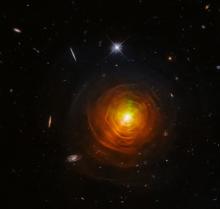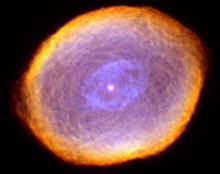Listen to today's episode of StarDate on the web the same day it airs in high-quality streaming audio without any extra ads or announcements. Choose a $8 one-month pass, or listen every day for a year for just $30.
You are here
Minimal Star
The Sun is big, bright, and heavy. In fact, compared to the faintest star yet seen, it’s a monster. The star is only as big as Jupiter, the solar system’s largest planet. And it’s only about one ten-thousandth of the Sun’s brightness. So if the star took the Sun’s place, it would look about as bright as a full Moon.
The star is known only by a catalog number, which we’ll shorten to 2MASS J0523. It’s about 40 light-years away, in Lepus, the rabbit.
The star lies along the dividing line between true stars and the failed stars known as brown dwarfs. And the main thing that defines that line is mass.
J0523 is roughly seven percent the mass of the Sun. At that weight, its gravity squeezes its core just enough to sustain nuclear reactions. That releases energy, making the star shine.
Anything below that mass can’t get the job done. Its core doesn’t get hot enough, so the object is a brown dwarf. Gravity does squeeze it enough to produce heat, which shines into space. But the object slowly cools and fades away.
A star like J0523 trades brilliance for longevity. The star is expected to remain in the prime of life for more than 10 trillion years — a thousand times longer than the Sun.
Lepus is low in the southeast at nightfall, to the lower right of bright Orion. Although J0523 is close to the constellation’s brightest star, you need a powerful telescope to see this faint nightlight.
Script by Damond Benningfield





